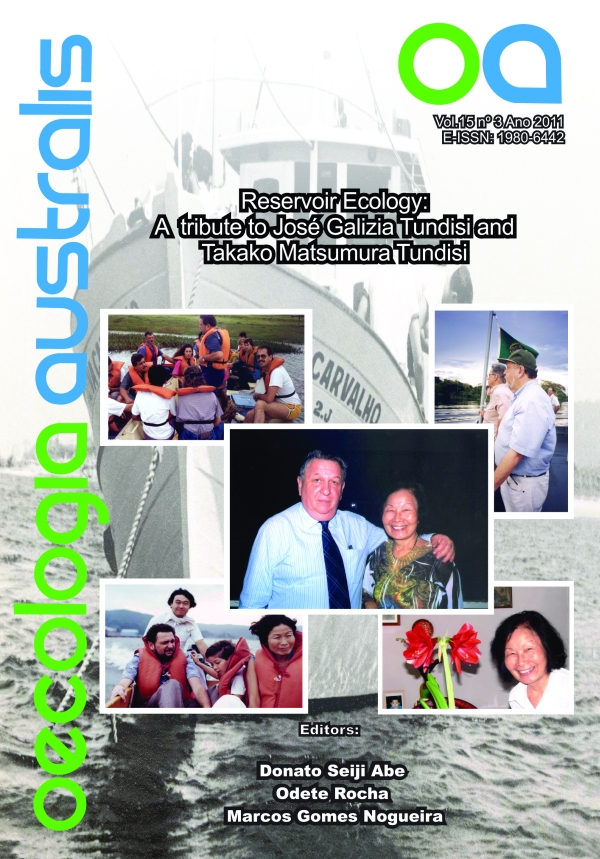IMPORTANCE OF LATERAL LAGOONS FOR THE ZOOPLANKTON ASSEMBLAGES (CLADOCERA AND COPEPODA) IN A LARGE TROPICAL RESERVOIR
Keywords:
Paranapanema River, floodplain, microcrustaceans, spatial variation, temporal variation.Abstract
This study aimed to analyze the composition and the ecological attributes of the zooplankton assemblages (Cladocera and Copepoda), in four marginal lagoons and in the main channel of Rosana Reservoir (SE Brazil). Fieldwork was carried out in September and November/2004 and January, March, May and August/2005. A total of 72 taxa were identified (55 cladocerans and 17 copepods). Seasonally, a significant higher richness was observed during the rainy period. The lateral lagoons, compared to the reservoir, and the rainy period, compared to the dry one, showed higher zooplankton abundance. Copepods exhibited higher abundance than cladocerans. Among the copepods, there was a higher abundance of nauppli forms in the lateral lagoons and in the dry period. Calanoida dominated in relation to Cyclopoida. The most numerous cladoceran family was Bosminidae, followed by Daphniidae. The results showed that the zooplankton assemblages are influenced by the meteorological factors, by some important nutrients (indirectly) and by the phytoplankton abundance. This pattern indicated that in the lateral lagoon system the communities are controlled by bottom-up mechanisms. The results validate the hypotheses that lateral lagoons have a prominent ecological role for the zooplankton of Rosana Reservoir and also evidenced the main driving forces influencing the composition and ecological attributes of the assemblages. The incorporation of the reservoir lateral lagoons in regional environmental programs should be a target strategy for the conservation of the aquatic biota, mitigating the negative impact of the dam.


